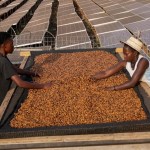(Juba) – Gold prices fell sharply on Friday, marking their lowest point in nearly a month as global geopolitical and trade tensions showed signs of easing. This drop in price is being closely monitored in South Sudan, where gold is increasingly seen as a critical hedge against economic uncertainty and currency depreciation.
Spot gold lost 1.4%, reaching $3,282.68 (equivalent to 6,863,460 South Sudanese Pounds) per ounce by mid-morning GMT. This marks the lowest level since late May and represents a weekly drop of more than 2%, wiping out over $200 from the record highs set in April.
US gold futures also declined, falling 1.6% to $3,294.50 (6,896,370 SSP). The downturn came as markets responded to diplomatic developments that are cooling tensions in key global regions.
One of the main contributors to the easing sentiment is the ceasefire agreement between Iran and Israel, brokered earlier in the week by US President Donald Trump. So far, the truce appears to be holding, reducing the demand for traditional safe-haven assets like gold.
Additionally, Washington announced it had reached a consensus with China on accelerating rare earth metal supplies to the United States—another sign of reduced trade friction. The timing is significant, as the US has set 9 July as a deadline for its latest round of mutual tariffs, pressuring stakeholders to finalise negotiations.
Meanwhile, the European Union has received a formal trade offer from the United States, further signalling a move towards more stable global trade conditions. These developments are pushing investors away from zero yield bullion in favour of interest bearing assets.
“Gold is not benefiting from the latest dollar dip because the safe-haven demand has clearly diminished,” said Fawad Razaqzada, a market analyst at City Index and FOREX.com.
Gold has long been valued for its role as a hedge against inflation and geopolitical risk. However, in a climate of high interest rates and easing tensions, that traditional appeal is weakening. In South Sudan, where gold is mined both artisanally and at an industrial scale, such international price movements are directly linked to economic resilience and revenue potential.
Other precious metals also saw declines. Spot silver dropped by 1.8% to $35.96 (75,200 SSP), platinum fell by 5.9% to $1,334.63 (2,790,720 SSP), and palladium dipped 1.2% to $1,117.96 (2,337,230 SSP). Despite the fall in platinum’s price from the day’s high, analysts noted that the metal had recently reached its highest level since 2014, driven largely by its relative affordability compared to gold.
A research note from Commerzbank suggested that platinum’s appeal is growing due to its significant price discount relative to gold, which some investors now see as overpriced.
For South Sudanese stakeholders, particularly those in the mining sector and central monetary authorities, this dip in global gold prices introduces uncertainty around export income, domestic reserves and investor sentiment.
Traders and policymakers in Juba should be watching closely as international markets remain fluid ahead of the US inflation data release.


















































